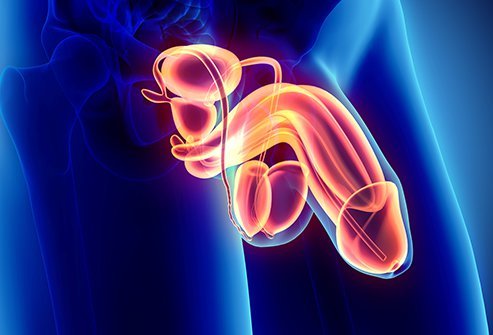What is balanitis?

You can get balanitis from STDs
Balanitis is an inflammation of the head of the penis and/or foreskin that surrounds the head of the penis in uncircumcised men. However, not everyone agrees with this definition. For example, some consider balanitis as only inflammation of the penis head, while inflammation of the foreskin is posthitis and inflammation of both structures is balanoposthitis. For the purpose of this article, balanitis will be discussed an inflammation of the head of the penis and/or surrounding foreskin.
- Males who are predisposed to developing balanitis include those with:
- Males who are more likely to develop balanitis include those:
- With poor personal hygiene
- Who are sensitive to chemical irritants (for example, soaps and lubricants)
- That have drug allergies
- Males with diabetes are at increased risk of developing balanitis and diabetes is a very common cause of balanitis. Glucose (sugar) on the skin encourages bacterial and fungal growth, particularly males:
- Balanitis can be a distinct clinical feature in men with reactive arthritis.
- Balanitis can be caused by sexually transmitted diseases (STDs).
Itchy Penis Causes
Itching in the area of the penis or external genital organs occurs for many of the same reasons that itching occurs elsewhere on the body. Examples of causes of penile itching includes:
- infections (for example, sexually transmitted diseases (STDs), jock itch, scabies, and pubic lice),
- balanitis,
- tight undergarments,
- allergic reactions,
- skin friction,
- other conditions.
Is balanitis contagious?
The answer to this question is somewhat complex; it is not a simple yes or no.
- Balanitis caused by normal skin bacteria on the penis or balanitis caused by a chemical skin irritant is generally considered non-contagious.
- Balanitis caused by certain fungi (yeast) and/or specific bacteria or viruses (including those that cause STDs such as gonorrhea) is transferable from one person directly to another person.
- Although the actual disease balanitis usually is not transferred to other males, the organisms causing balanitis may be transferred.
- Since some of the bacteria, fungi, or viruses that cause balanitis are contagious, balanitis could be considered “contagious” under special conditions (such as balanitis caused by STDs).

SLIDESHOW
Balance Disorders: Vertigo, Motion Sickness, Labyrinthitis, and More See Slideshow
How can you tell if you have balanitis? What are symptoms and signs?
If the male with whom one has had contact has balanitis caused by chemical or normal skin bacteria, it is unlikely that the disease is contagious. However, there is a significant risk of a person becoming infected if he or she has been exposed to a male who has balanitis caused by specific viruses, bacteria, or fungi such as:
The time required to develop symptoms after exposure (incubation period) differs with the different viruses, bacteria, or fungus. However, the first signs and symptoms of balanitis are:
- Redness
- Itching
- Swelling
- Tenderness of the head of the penis and its surrounding foreskin
Other symptoms may develop, depending upon the transmitted viruses or bacteria. For example, discharge from the urethra, ulcerations, and enlarged lymph nodes are symptoms that may develop with sexually transmitted diseases. Tests for STD’s and specific bacteria and viruses can help distinguish balanitis from other diseases that may mimic balanitis like herpes and gonorrhea.
Latest Men’s Health News
Daily Health News
Trending on MedicineNet
How will I know if I am no longer contagious?
If you have or have had the non-contagious type of balanitis, you should have no concerns about being contagious. However, if your balanitis was due to an infectious bacteria or virus, you would be noncontagious after the bacteria or virus was treated and cured.
Antibiotics and topical creams are used to treat balanitis. The time frame for complete recovery varies according to the nature of the infectious agent.
What is the treatment for balanitis? How long does it take to go away?
Treatment for common yeast-caused balanitis is topical canesten 1% cream (clotrimazole, Lotrimin); recommended treatment time varies from about 2 weeks to 1 month. Lotrisone (combination of betamethasone and clotrimazole) has also been used.
When should you call a doctor for balanitis? Can it be cured?
Contact your doctor if you notice any redness, swelling, and/or irritation of the penis and/or foreskin. Health care professionals can help you with treatment of both noncontagious and contagious causes of balanitis, as well as assist in determining the cause of the infection. Persistent symptoms of balanitis should be evaluated by a health care professional.
- Complications of balanitis include constriction of the opening of the urethra (phimosis) and severe urinary obstruction. These complications can require emergency treatment. Some with balanitis may require consultation with a urologist.
- Balanitis caused by bacteria, yeast or other organisms that are resistant to treatment may not be easily cured.

QUESTION
Testosterone is a chemical found only in men. See Answer
Medically Reviewed on 5/6/2022
References
Osipov, VO, MD, et al. “Balanoposthitis.” Medscape. Updated: Aug 07, 2018.
<https://emedicine.medscape.com/article/1124734-overview>